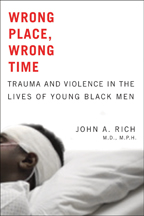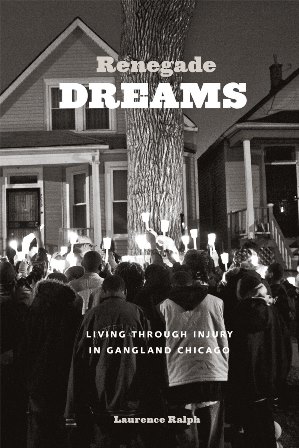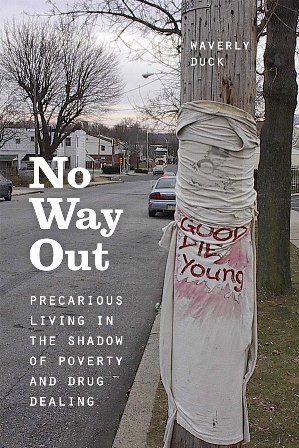I once attended a talk where an audience member asked panelists, “How much does gun violence cost us?” Panelists offered different responses, each highlighting the broad economic burden of shootings. One person talked about the public tax dollars that fund emergency and inpatient care for uninsured gunshot victims. Another panelist noted that shootings often knock a person out of the labor market indefinitely, thus diminishing tax revenues that would have come from their labor. A third person mentioned that the estimated annual costs of firearm injuries exceed the annual budget for the Department of Education and the Department of Homeland Security combined.
I learned a lot from this panel, but left wondering: What might gun violence research look like if we centered our analysis on victims? What would this growing field look like if we broadened our notion of loss? What if we also focused on the social losses felt by victims, their families, and entire communities after a shooting?
“By spending time with victims, ethnographers gain access to domains of suffering that are often neglected in social science work on gun violence.”Ethnographers are uniquely positioned to answer these questions. Immersive, long-term fieldwork enables researchers to be “there” with victims as they navigate life after fatal and nonfatal shootings. This is a difficult, but precious vantage point. By spending time with victims, ethnographers gain access to domains of suffering that are often neglected in social science work on gun violence. It’s one thing to read statistics about injury, death, and their associated costs, and an entirely different thing to witness suffering up close. Prior theoretical concerns become less urgent when you are spending time with a mother who is mourning the murder of her child, or when you are with a victim who cannot afford to buy new colostomy bags.
Ethnography also shows how firearm related injuries and death reorganize the social worlds of victims, their loved ones, and entire communities. The person who spends time with victims quickly realizes the collective work that goes into rebuilding the lives of the wounded. These insights are not only important from a substantive perspective—they can also change public perceptions of gunshot victims, who are still viewed by many as “guilty victims” undeserving of empathy and care.
Ethnography of social loss
I learned these lessons while studying nonfatal gunshot victims in Philadelphia, a city that some folks call “Killadelphia.” I started this project during the first year of a Robert Wood Johnson Foundation Health & Society Scholars fellowship at the University of Pennsylvania. On Friday afternoons, I’d set up shop in an empty exam room inside the outpatient trauma clinic at the Hospital of the University of Pennsylvania (HUP), which was and continues to be one of the busiest trauma hospitals in the country. I interviewed 40 victims over several months. They were returning to the hospital days, months, and even years later.
Some were alone. Other came with family. Some interviews were long. Others were short. Some interviewees gave detailed accounts about how they got shot. Others were succinct and focused on the emotional toll of being injured. Some were visibly injured. Others seemed healthy until their bodies betrayed them in front of me. I learned a lot from these interviews, which introduced me to the pain, post-traumatic stress, and everyday challenges during life after the shooting.
“ My understanding of ‘social loss’ was enriched by fieldwork outside of the hospital.”But, my understanding of “social loss” was enriched by fieldwork outside of the hospital. As Colin Jerolmack and Shamus Khan argue, what people say is not always a good indicator for what they do.1Colin Jerolmack and Shamus Khan, “Talk Is Cheap: Ethnography and the Attitudinal Fallacy,” Sociological Methods & Research 43, no. 2 (2014): 178–209. Or, to put it another way, self-reports of behavior are not always a good representation of people’s lives. This is one of the methodological reasons for doing ethnography. By spending a lot of time with people, researchers are able to see people’s behaviors, interactions, and sense-making across time and in different social contexts. These observations pierce through the veneer of first impressions and selected narratives. They help researchers see a more complex, humanistic portrait of people trying to meet the demands of everyday life. This is especially valuable in gun violence research because victims—who are disproportionately young Black men in the United States—are not always forthcoming about the ongoing challenges, fears, and uncertainties they face when they get out of the hospital.
I saw this in my interactions with a guy I call “Ervin,” a 27-year-old Jamaican American man who I met in my second week at the hospital. Ervin was 26 when he got shot, which put him in the most at-risk demographic group for getting shot. In the United States, young Black men like Ervin are 16 times more likely to get shot and injured than their white counterparts.2A yearly average was developed using five years of most recent available data: 2013 to 2017. Web-based Injury Statistics Query and Reporting System (WISQARS) Nonfatal Injury Reports, National Centers for Injury Prevention and Control, Centers for Disease Control and Prevention. This disparity extends across the life course. In fact, homicide (most of which are committed with firearms) is a leading cause of death for young Black men in the United States. It is not a leading cause of death for any other demographic group.
We met on a quiet Friday afternoon in the clinic. He was eager to show me his legs, which still had retained hollow-point bullets in them. In addition to persistent and excruciating pain, Ervin complained about intermittent swelling in his legs. He also told me that he was depressed. The transition into life after the shooting was hard, as it robbed him of an active life that he had loved. But, throughout it all, Ervin was stoic and smiling. He told me that he was managing his pain and debility.
Yet I got a different picture the following week when I visited him at his mom’s house. Ervin was struggling a lot more than he was letting on. He had trouble getting into and out of bed. He rarely sat down because doing so would cause his legs to swell up. And, even when he didn’t have pain, Ervin was scared to leave his house. To make matters worse, the nerve damage in his legs was much more disruptive than what he had described. Every so often, he’d seize up and wince in pain as the retained bullets scraped against nerve endings. This would send bolts of “electricity” down his legs into his toes. This was painful and it made Ervin lose confidence in his body. Like so many others in the hospital, Ervin had gone from being young and able-bodied to being disabled overnight.
However, the suffering spread beyond Ervin. His partner, her two kids, and his mom were sad, frightened, and stressed about what had happened. Like Ervin, they also lived in fear, suddenly more aware of how quickly their lives could change or end. They also shrank away from the world to stay out of harm’s way. As I dug deeper, I saw how the trauma of Ervin’s shooting spilled over into their lives and the lives of others as well.
Discovering new links in a world of suffering
Ervin was one of nine people that I followed around when I left the hospital. This fieldwork confirmed some of the stories that I had heard there. It deepened my understanding of suffering. And in other moments, it introduced me to ideas that I hadn’t considered and wouldn’t have known without doing fieldwork.
“Over the next year or so, I followed Paul around Philadelphia as he became increasingly addicted to Percocet and other prescription opioids.”For example, my time with “Paul” introduced me to a sprawling illicit economy for chronic pain management. One day, I showed up to the homeless shelter where he was staying. After meeting some of his friends, Paul complained that he was having pain and asked for a lift to buy Percocet off the books. I drove him to a stoop where he bought Percocet from a street-corner dealer. Over the next year or so, I followed Paul around Philadelphia as he became increasingly addicted to Percocet and other prescription opioids. All the while, he took greater risks to find pain relief, eventually running out into traffic and pretending to get hit by a car so he could get physical rehabilitation.3Jooyoung Lee, “The Pill Hustle: Risky Pain Management for a Gunshot Victim,” Social Science & Medicine 99 (December 2013): 162–8.
My time with Paul informed the rest of my interviews and fieldwork. I began to ask other victims if they were self-medicating with opioids and other prescription drugs. As it turned out, Paul wasn’t the only one. Others were self-medicating with Vicodin and other painkillers, while some were using Xanax to treat their anxiety and depression. This single interaction (and many others over the next couple years) revealed an entire world that I had not anticipated at the outset of this study. It forced me to revisit what I thought I was explaining. With each turn, I broadened my thinking about how victims cope with their injuries and lingering trauma.
A small but growing field of ethnographic studies on gun violence has inspired my thinking. In different ways, these ethnographies highlight the payoffs of “being there” and show how extended fieldwork opens rich insights into the social losses associated with shootings. John Rich interviewed wounded young Black men inside a Boston hospital and then followed up with these victims over time. He learns about the “invisible scars” that they carry long after they have been released from clinical care and documents how they alter their lives in the aftermath.4 Baltimore: Johns Hopkins University Press, 2008More Info → Laurence Ralph spends time with the Crippled Footprint Collective, a group of wheelchair bound young men who share their stories of pain and trauma with at-risk high school students. Not only are these performances meaningful to youth in attendance, they are also meaningful to young men who construct a new sense of self from their role as mentors.5
Baltimore: Johns Hopkins University Press, 2008More Info → Laurence Ralph spends time with the Crippled Footprint Collective, a group of wheelchair bound young men who share their stories of pain and trauma with at-risk high school students. Not only are these performances meaningful to youth in attendance, they are also meaningful to young men who construct a new sense of self from their role as mentors.5 Chicago: University of Chicago Press, 2014More Info → Waverly Duck draws from extensive fieldwork in a community to show how local understandings of shootings contradict police and criminal justice views of “gang-related” violence.6
Chicago: University of Chicago Press, 2014More Info → Waverly Duck draws from extensive fieldwork in a community to show how local understandings of shootings contradict police and criminal justice views of “gang-related” violence.6 Chicago: University of Chicago Press, 2015More Info → Others, like Forrest Stuart, Joseph Richardson Jr., Desmond Patton, Tanya Sharpe, and Cid Martinez, are also working on projects that describe how gun violence transforms individuals, families, and communities. We can learn a lot from these studies, which examine social losses accrued by victims in the aftermath of shootings.
Chicago: University of Chicago Press, 2015More Info → Others, like Forrest Stuart, Joseph Richardson Jr., Desmond Patton, Tanya Sharpe, and Cid Martinez, are also working on projects that describe how gun violence transforms individuals, families, and communities. We can learn a lot from these studies, which examine social losses accrued by victims in the aftermath of shootings.
This isn’t an easy road. Fieldwork takes a long time. There is a lot of confusion and uncertainty during fieldwork. Each new interaction potentially leads a person down new roads, forcing them to consider new ideas. And when all is said and done, it can be a challenge to figure out how a mountain of ethnographic data fits together into a coherent whole.
But, when done well, the ethnographer uncovers aspects of social life that are invisible to researchers using other methods. Not only is this research valuable from a substantive perspective, it can also help change the public conversation about communities whose lives are framed by institutions that are not “there” with them on the ground. By getting close to people, and documenting their lives, ethnographers have a unique perspective that can reshape taken-for-granted images of stigmatized populations.
In some social science circles, there is a tendency to look down upon research that contains an “applied” component. Moving forward, I don’t see this is as a tenable position for social scientists, particularly as governments and the mass public question the relevance and importance of academic research. Our work should aim to reach public audiences and reduce suffering in the world. Part of this project rests on our ability to explode stereotypical images of people whose lives are represented in narrow and ultimately harmful ways. This is a worthy direction for future gun violence research.
Banner photo credit: TC Davis/Flickr













